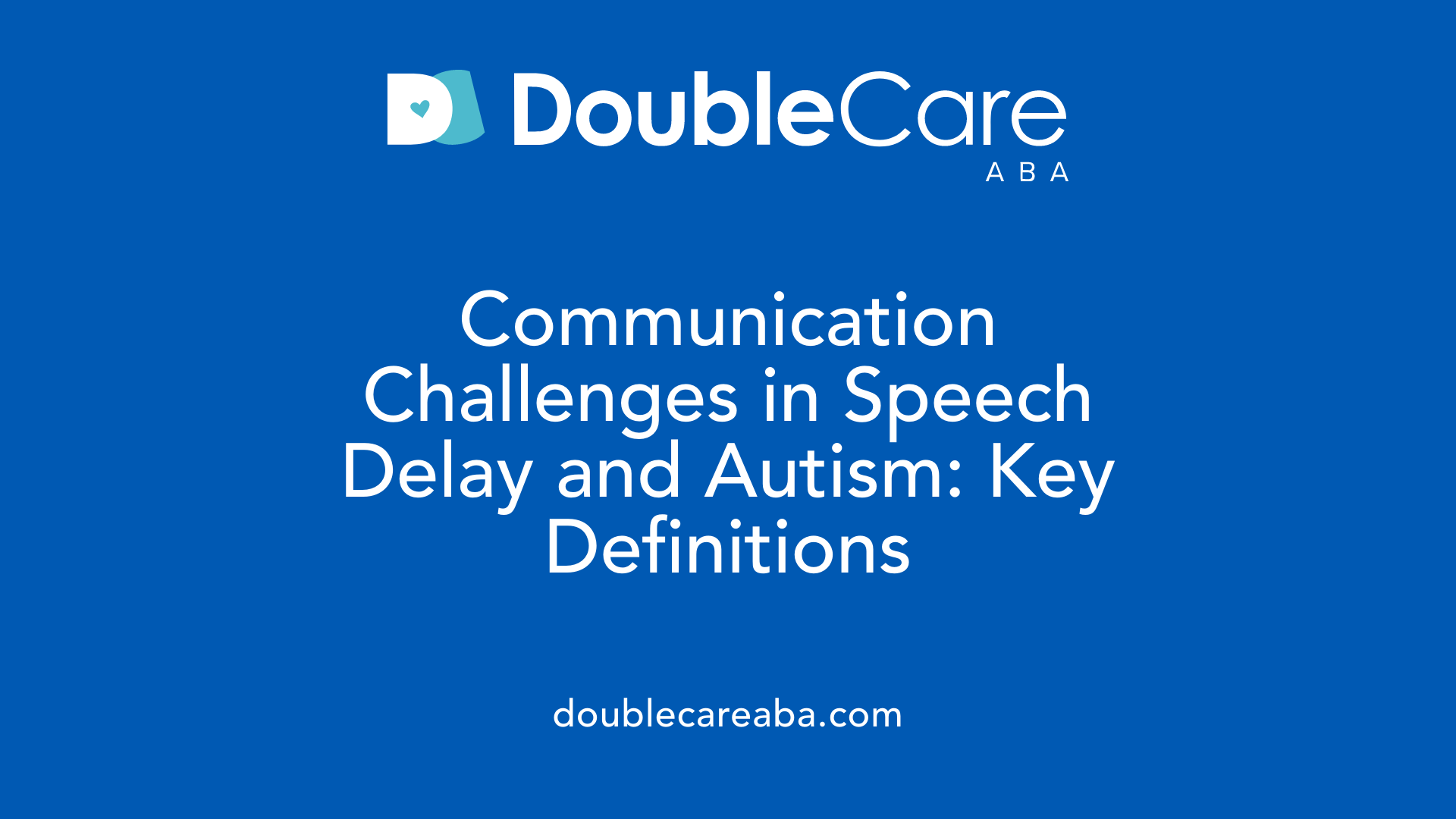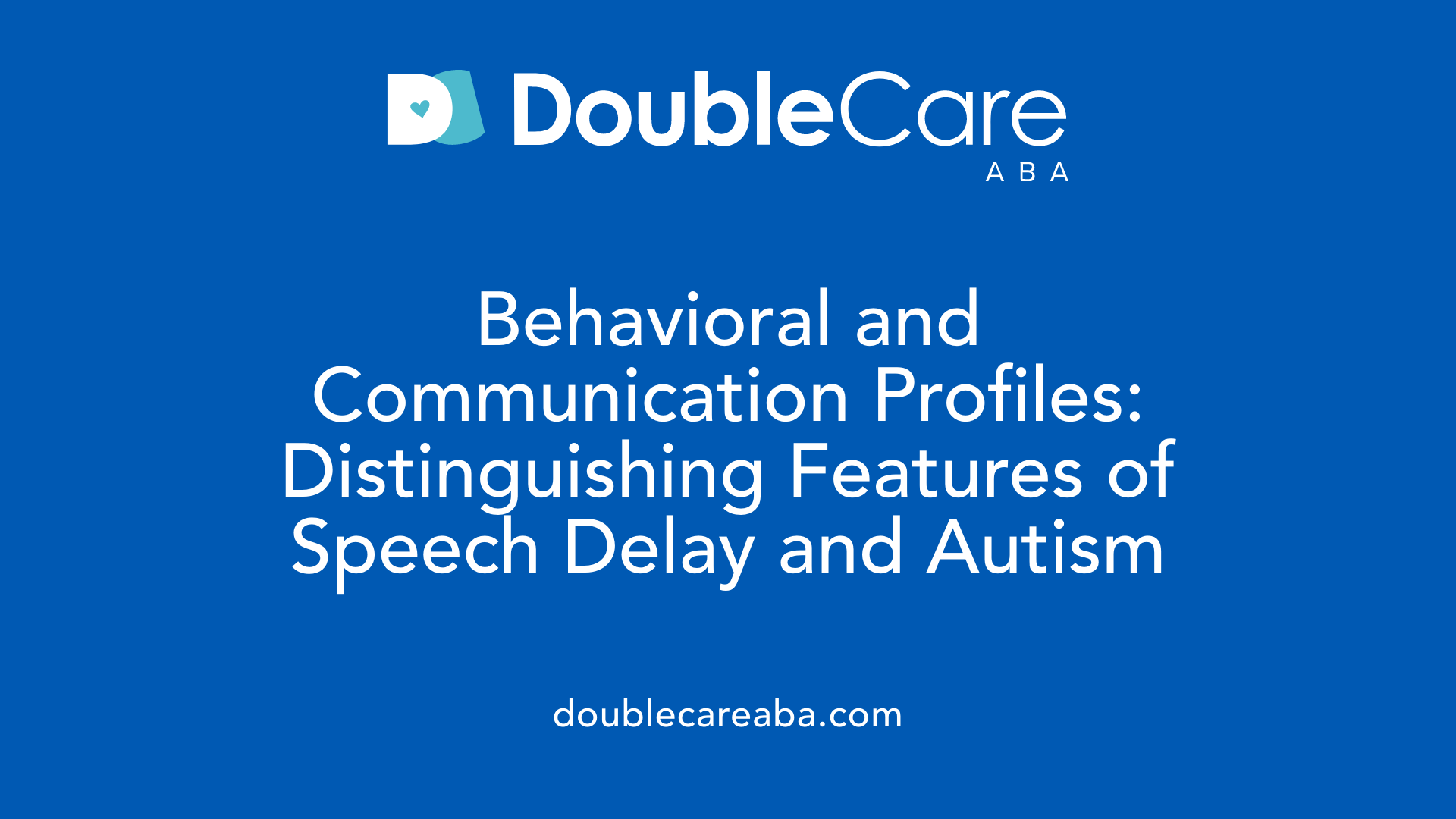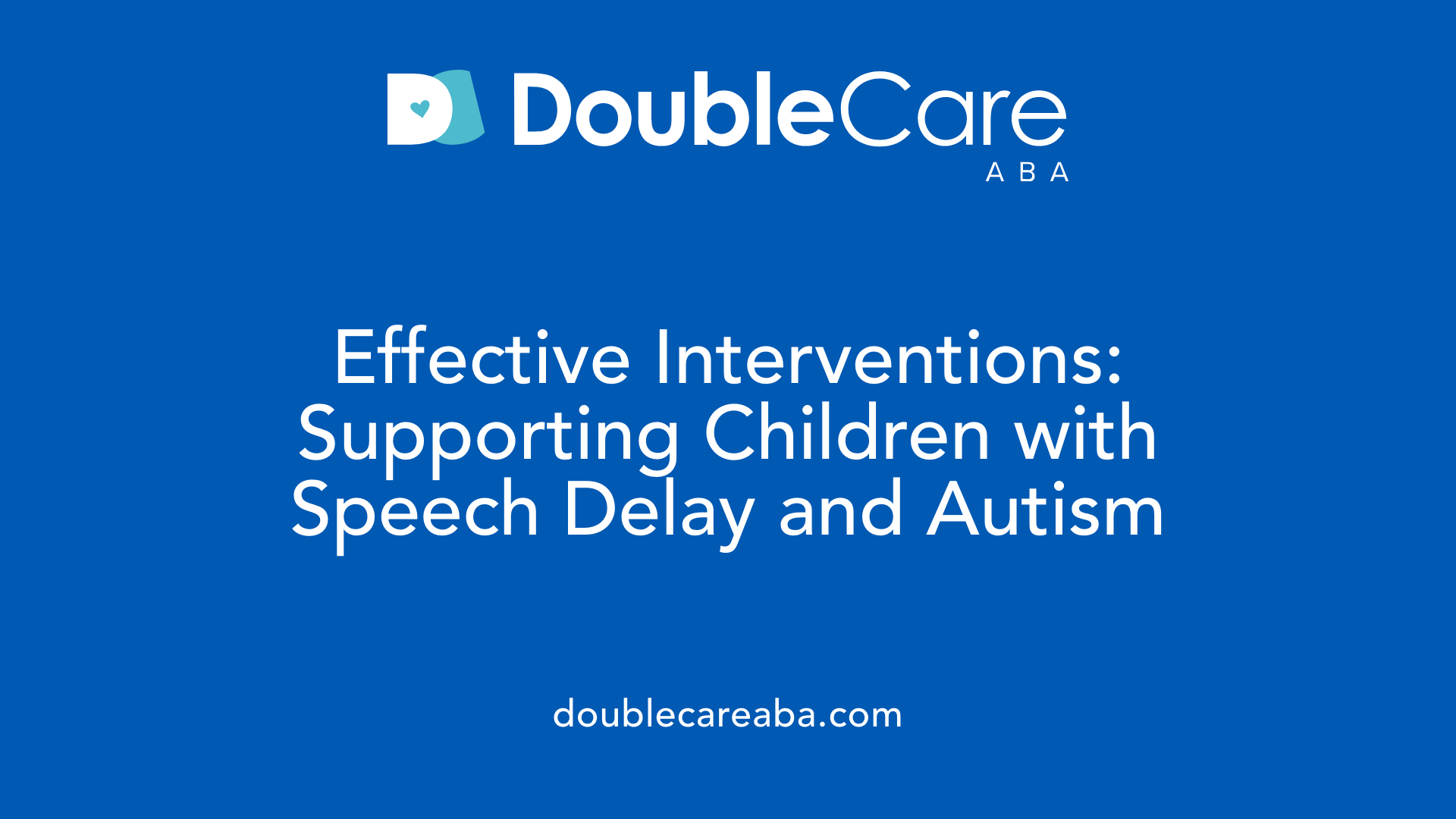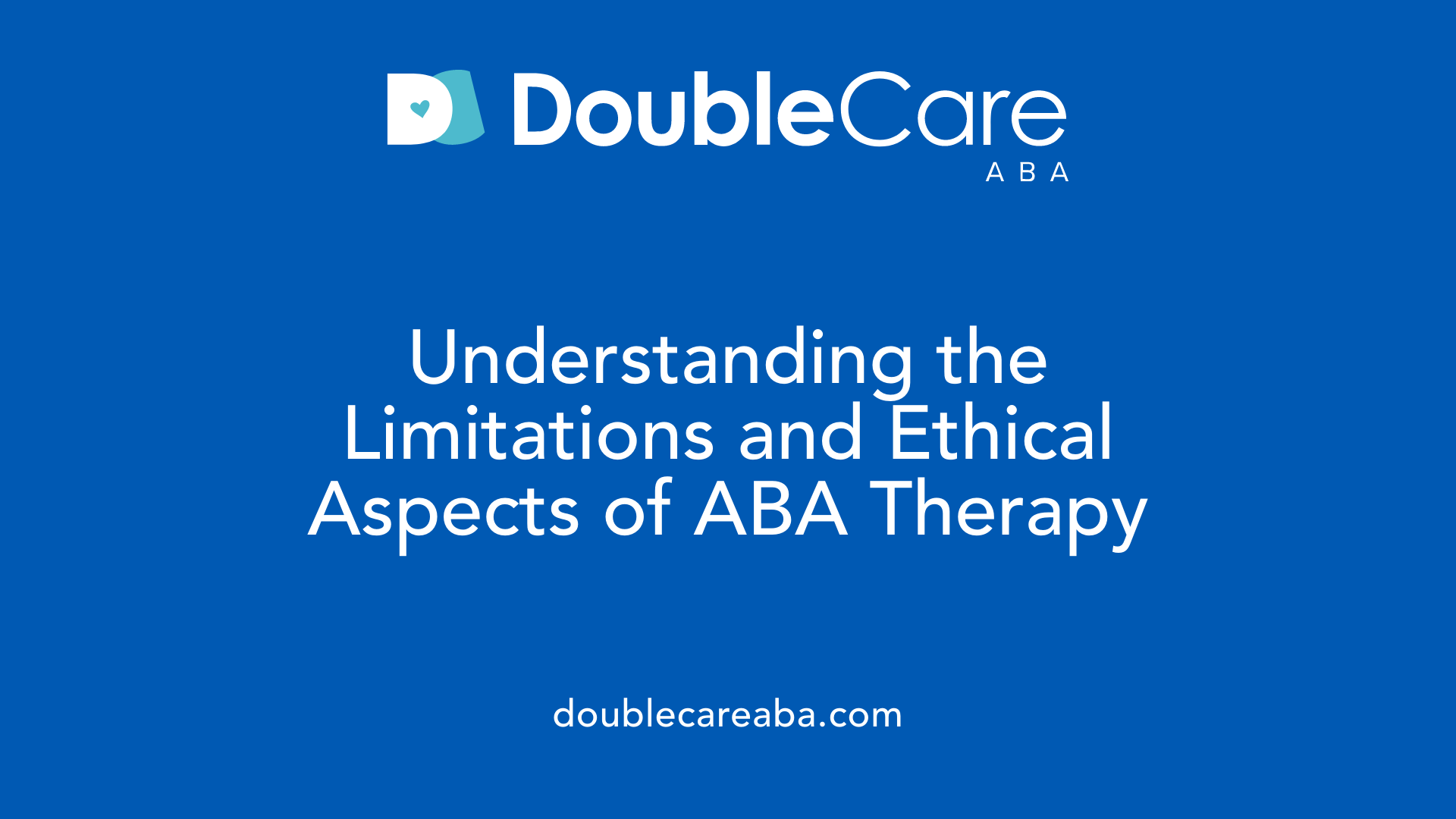Speech Delay vs. Autism
Understanding Communication Challenges in Early Childhood Development

Distinguishing Between Speech Delay and Autism: Why It Matters
Speech delays are a common concern among parents and caregivers of young children, often prompting questions about developmental progress and possible underlying conditions. While some children experience typical speech delays and eventually catch up, others may exhibit signs of autism spectrum disorder (ASD), a neurodevelopmental condition that affects broader areas such as social communication and behavior. This article explores key differences between speech delay and autism-related speech challenges, examines diagnostic approaches, and highlights intervention options including behavioral therapies like ABA. Early and accurate differentiation is essential to ensure that children receive appropriate support and make meaningful developmental gains.
Defining Speech Delay and Autism-Related Communication Challenges

What Is Speech Delay, and How Common Is It?
Speech delay affects about 5-12% of preschool-aged children. It means a child is slower than typical in developing verbal communication skills. Children with speech delay generally understand language but struggle to produce clear sounds or form words on time. Despite these delays, they often maintain social reciprocity, using gestures like pointing or body language to communicate and showing frustration when misunderstood.
Overview of Autism Spectrum Disorder (ASD)
Autism spectrum disorder (ASD) affects roughly 1 in 31 children. It is a neurodevelopmental condition featuring persistent challenges in social communication and interaction. Children with ASD often have limited eye contact, use fewer gestures, and may engage in repetitive behaviors. Speech development can vary widely; some children may speak later than peers, use repetitive speech, or not speak at all.
How Do Speech Delay and Autism-Related Speech Delay Differ?
The main difference lies in social communication and engagement. Children with standard speech delay usually try to communicate through gestures and show interest in interacting with others. In contrast, children with autism-related speech delay may not respond to their name, avoid eye contact, or fail to imitate sounds and gestures. While speech delay focuses solely on verbal skills, autism involves broader developmental areas like social cues and repetitive behaviors.
| Feature | Speech Delay | Autism-Related Speech Delay |
|---|---|---|
| Social Engagement | Attempts communication using gestures | Limited or no attempts to engage socially |
| Use of Nonverbal Cues | Uses gestures, pointing, and body language | Reduced or unusual use of gestures and facial cues |
| Speech Development Patterns | Delayed but generally follows typical milestones | May include repetitive or contextually inappropriate speech |
| Behavioral Traits | Normal play and social interest | Repetitive behaviors, limited play variety |
Early and accurate identification of these differences is essential to guide appropriate intervention strategies, improving outcomes for children with either condition.
Early Signs and Diagnostic Tools for Speech Delay and Autism

Developmental Milestones for Speech
Most children develop basic verbal communication abilities within the first 1-2 years of life. Typical early milestones include babbling, pointing by around 18 months, and speaking simple vocabulary by 12-18 months. Children with speech delays generally follow these milestones but progress more slowly and often use gestures or body language to communicate.
Early Autism Indicators
Children with autism spectrum disorder (ASD) frequently exhibit delays not only in speech but also in broader social and behavioral domains. Early signs include lack of response to their name, slow or absent babbling, reduced use of gestures, difficulties imitating sounds, limited eye contact, and repetitive behaviors such as lining up toys. They might also rely heavily on single-word communication or echolalia (repetition of unrelated words or phrases).
Screening Tools and Assessments Used
Differentiating speech delay from autism requires careful evaluation by professionals using both observational and standardized screening tools. Speech delay assessments concentrate on articulation, vocabulary development, and oral-motor skills using tools like the Clinical Evaluation of Language Fundamentals - Preschool (CELF-P) and Preschool Language Scale (PLS). Autism evaluations assess pragmatic language skills, social interaction, joint attention, play behaviors, and sensory processing, employing standardized instruments such as the Ages and Stages Questionnaire (ASQ) and the Modified Checklist for Autism in Toddlers (M-CHAT).
How is speech delay assessed differently from autism?
Speech delay assessments focus on language skills such as articulation, vocabulary, oral motor capabilities, and receptive and expressive language abilities. In contrast, autism evaluations include analysis of pragmatic language, social interactions, joint attention, play behaviors, and sensory responses. Professionals integrate findings from screening tools, behavioral observations, and parental reports to ensure accurate differential diagnosis. This approach is essential to tailor early intervention strategies effectively, improving long-term communication and developmental outcomes.
Behavioral and Communication Profiles: How Children Differ

Typical Behaviors in Speech Delay
Children experiencing speech delay usually follow typical developmental milestones for social interaction and play, just at a slower pace. They often display frustration when they struggle to communicate verbally but persistently try to engage others. Many use gestures such as pointing or nodding effectively to supplement their spoken words. Their social reciprocity—like responding to others' facial expressions and playing with peers—is generally age-appropriate.
Social and Behavioral Traits of Autism
In contrast, children with autism spectrum disorder (ASD) frequently show distinct social and behavioral patterns. Early signs may include reduced or absent eye contact and a preference for solitary activities instead of interacting with others. They may perform repetitive behaviors, such as lining up toys or repeating phrases out of context. These children may not respond, or respond slowly, to their names and often have difficulty imitating speech sounds or developing typical gestures. Their communication might rely heavily on alternative methods such as pictures, sign language, or speech-generating devices.
Nonverbal Communication Differences
Nonverbal communication provides crucial clues in differentiating between speech delay and autism. Children with speech delay tend to use nonverbal cues like gestures, facial expressions, and body language in a way that supports communication attempts. Conversely, children with autism may show a slower development of gestures, reduced imitation of vocalizations, limited use of joint attention behaviors, and diminished responsiveness to social cues like eye contact and name calling.
Both profiles present overlapping features, such as delayed speech milestones, making thorough assessment critical. Distinguishing behavioral patterns—social engagement, response to name, gesture use, and repetitive behaviors—offers valuable diagnostic insight.
| Aspect | Speech Delay | Autism Spectrum Disorder (ASD) |
|---|---|---|
| Social Interaction | Age-appropriate, uses gestures | Reduced eye contact, prefers solitary play |
| Communication Effort | Persistent attempts, uses gestures | Limited imitation, repetitive phrases, alternative communication |
| Behavioral Patterns | Shows frustration, varied play | Repetitive behaviors, lining up objects |
| Response to Name | Usually responsive | Often slow or absent response |
Understanding these distinctions supports early and accurate diagnosis, facilitating timely interventions tailored to each child's needs.
Interventions and Therapies: Approaches for Speech Delay and Autism Spectrum Disorder

What interventions are recommended for speech delay and autism?
For children with speech delay, speech-language therapy is the main approach. Therapy focuses on improving articulation, expanding vocabulary, and enhancing the child's ability to communicate effectively. Parents play a critical role during therapy by practicing communication skills at home, offering an enriched language environment and encouragement.
In contrast, interventions for children with Autism Spectrum Disorder (ASD) are more comprehensive and multidisciplinary. Applied Behavior Analysis (ABA) is widely recognized for improving communication and social skills by reinforcing positive behaviors.
Additional therapies include:
- Occupational therapy, which supports sensory integration and daily living skills.
- Social skills training to improve peer interaction and understanding of social cues.
- Use of augmentative and alternative communication (AAC) tools, such as speech-generating devices or picture exchange communication systems, for children with limited verbal speech.
Role of early intervention
Early detection and intervention are crucial for both speech delay and autism. Starting therapies during the preschool years maximizes developmental gains, leading to improvements across multiple areas including language, cognition, social interaction, and self-help abilities.
Early intervention programs are available for children up to age five and provide tailored support based on individual needs. These programs often involve a team of specialists, such as speech-language pathologists, occupational therapists, and developmental pediatricians, ensuring a holistic approach.
By addressing communication challenges promptly, children can achieve better long-term outcomes, reducing frustration and fostering successful development.
| Intervention Approach | Focus Areas | Benefits |
|---|---|---|
| Speech-language therapy | Articulation, vocabulary, communication | Accelerates speech development, engages family in learning |
| ABA and behavioral therapies | Communication, behavior, social skills | Enhances social interaction, reduces repetitive behaviors |
| Occupational therapy | Sensory integration, daily skills | Improves sensory processing and independence |
| Social skills training | Peer interaction, social cues | Builds peer relationships and communication |
| AAC tools | Alternative communication methods | Facilitates expression for nonverbal children |
Early and appropriate therapy choices empower children with speech delays or autism to develop essential communication skills and improve quality of life.
Applied Behavior Analysis (ABA) Therapy: Tailoring Support for Children with Autism
What is ABA therapy and how does it help individuals with autism?
Applied Behavior Analysis (ABA) therapy is a scientifically validated, behaviorally based intervention designed to help individuals with autism develop essential skills while reducing challenging behaviors. It applies learning theory principles like positive reinforcement through structured techniques such as discrete trial training and natural environment teaching. ABA therapy focuses on teaching communication, socialization, and self-help skills tailored to each child's unique needs. Early, intensive ABA has been shown to significantly improve language, social interaction, independence, and overall developmental outcomes.
Who typically provides ABA therapy services?
ABA therapy services are delivered by trained professionals including Board Certified Behavior Analysts (BCBAs), Board Certified Assistant Behavior Analysts (BCaBAs), and Registered Behavior Technicians (RBTs). BCBAs take the lead on designing and supervising individualized treatment plans. BCaBAs assist under supervision, while RBTs provide hands-on therapy sessions. These professionals work across various settings like clinics, schools, and community centers to ensure accessibility and consistency.
What are the key components or techniques used in ABA therapy?
ABA therapy uses a variety of techniques aimed at skill-building and behavioral improvements, such as:
- Discrete Trial Training (DTT): Breaking skills into small steps and teaching them systematically.
- Natural Environment Teaching (NET): Learning skills through everyday activities.
- Reinforcement: Using positive and negative reinforcement to encourage desirable behaviors.
- Prompting and Fading: Guiding responses and gradually removing assistance.
- Modeling and Behavior Chaining: Demonstrating behaviors and linking them into sequences.
- Extinction and Functional Communication Training: Reducing undesired behaviors and teaching alternative communication methods.
Visual supports and augmentative communication devices are often integrated based on the child's needs. Data collection is critical to monitor progress and adjust interventions accordingly.
How is an ABA therapy program tailored to an individual's needs?
ABA programs begin with thorough assessments identifying a child's strengths, challenges, sensory preferences, and developmental level. The therapy plan is then customized, selecting appropriate techniques that suit the child’s communication abilities and sensory sensitivities. Families are actively involved, ensuring interventions are relevant and transferable to home and community. Flexibility is maintained through ongoing monitoring to adapt goals and strategies in response to the child's progress.
What evidence supports the effectiveness of ABA therapy for autism?
Extensive research supports ABA's effectiveness, especially when initiated early and delivered intensively over 12 to 24 months. Studies demonstrate improvements in communication, social skills, adaptive behaviors, and intellectual functioning. Meta-analyses confirm moderate gains, although effects on language and core autism symptoms may vary. The evidence consistently highlights ABA as a cornerstone of autism treatment, improving long-term developmental outcomes across multiple domains.
Limitations and Considerations in ABA Therapy for Autism

Are there limitations or criticisms of ABA therapy for autism?
Applied Behavior Analysis (ABA) therapy has been widely recognized for its effectiveness in teaching communication skills and reducing harmful behaviors in children with autism. However, it is not without its criticisms and limitations.
Historically, some ABA approaches utilized punitive methods that caused emotional distress in children. This has led to concerns about the therapy promoting masking—where autistic individuals suppress natural behaviors to conform to neurotypical norms—potentially neglecting their unique identities and authentic experiences.
Critics, including many autistic self-advocates, highlight that ABA can sometimes prioritize compliance and conformity over personal autonomy and neurodiversity. This has prompted calls for ethical and individualized therapy approaches that respect each person's uniqueness.
Importance of ethical and individualized approaches
Modern ABA therapy emphasizes positive reinforcement and tailoring interventions to the individual needs and preferences of the child. Ethical practices involve collaboration with families, ensuring consent, and focusing on improving quality of life rather than enforcing rigid behavioral norms.
Therapists are encouraged to prioritize the child's comfort and well-being, supporting not only skill development but also self-acceptance.
Role of neurodiversity perspectives
The neurodiversity movement advocates viewing autism as a natural variation in human neurology rather than a disorder to be cured. This perspective encourages therapies that support autistic individuals in expressing their authentic selves and developing useful skills without erasing their individuality.
Incorporating neurodiversity into ABA means balancing skill acquisition with respect for the child’s identity and promoting self-advocacy. This approach fosters a more compassionate and empowering treatment environment.
| Topic | Description | Considerations |
|---|---|---|
| ABA Therapy Benefits | Effective in teaching communication and reducing harmful behaviors | Should focus on positive reinforcement |
| Criticisms of ABA | Past use of punitive methods, emotional distress, promoting masking | Requires ethical safeguards and person-centered plans |
| Ethical & Individualized Care | Tailoring therapy to needs, consent, family collaboration | Ensures respect for child’s autonomy |
| Neurodiversity Perspectives | Autism viewed as variation, promoting self-expression and identity | Therapy supports skill development without conformity |
This balanced and respectful approach ensures that ABA therapy can be both effective and considerate of the diverse experiences of autistic individuals.
Early Detection and Tailored Interventions Drive Positive Outcomes
Distinguishing speech delay from autism is essential because each requires different diagnostic approaches and tailored interventions to support a child's developmental trajectory effectively. While typical speech delay involves isolated verbal development challenges with intact social motivation, autism combines speech delays with broader social communication and behavioral differences. Early, comprehensive assessment using validated screening tools and collaboration among multidisciplinary professionals facilitates accurate diagnosis. Interventions like speech therapy and ABA have demonstrated meaningful benefits, particularly when initiated promptly. Awareness of therapy limitations and embracing individualized, respectful care ensures that children with diverse developmental needs receive support that fosters their strengths, autonomy, and quality of life.
References
- The Difference Between Speech Delays and Autism
- Speech Delay vs Autism: A Guide for Mental Health ...
- How to Tell the Difference Between Speech Delay & Autism
- Speech Delay or Autism? Understanding the Signs
- Speech delay vs. autism
- Speech Delay vs Autism: Recognize the Signs to ...
- Patient Outcomes After Applied Behavior Analysis for ...
















